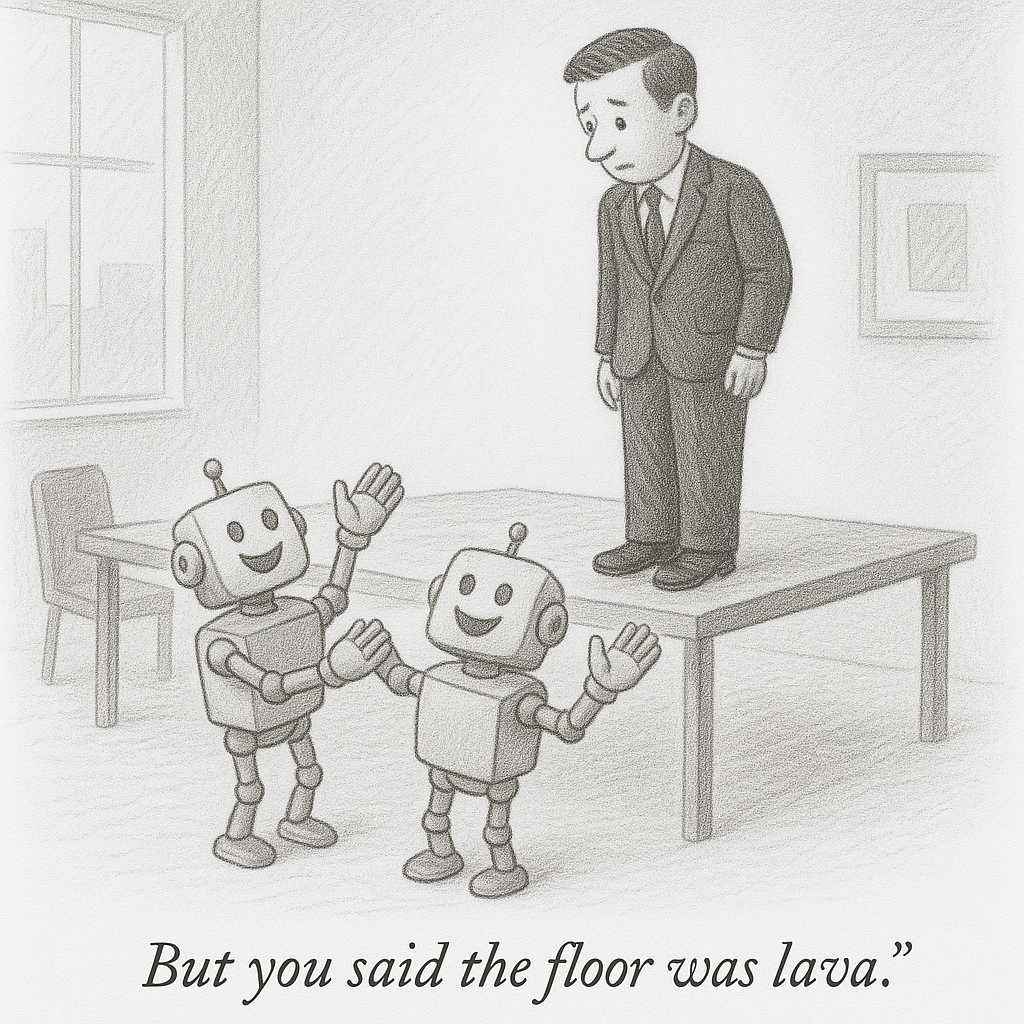| October 6, 2025

You’ve probably heard the horror stories:
AI that makes things up.
AI that leaks private data.
AI that forgets what you told it five seconds ago.
It’s true — large language models (LLMs) like ChatGPT and Gemini are powerful, but they’re also unpredictable by nature. Ask the same question twice, and you might get two different answers. That’s fine for brainstorming, but not for running real business operations.
At Workmind, our goal is to make AI automation that’s reliable enough to run every day — and safe enough to trust with your business. Let’s unpack what that actually means.
Why AI Can’t Be Trusted “Out of the Box”
AI models are built to predict words, not guarantee truth. That means they can:
- Make things up — also known as hallucination. An LLM might say something confidently, even if it’s completely wrong. (OpenAI explains why this happens)
- Say things it shouldn’t — like repeating personal data or private info someone once mentioned. That’s called data leakage or exfiltration. (See Simon Willison’s post on this)
- Mess up formatting or code — anyone who’s tried to get an AI to produce word documents or slides knows that it can be hard for an LLM to get the small formatting just right.
These issues aren’t signs of “bad AI.” They’re simply what happens when you give a creative system too much responsibility without limits.
How Workmind Keeps AI on a Leash
The trick isn’t to make AI “perfect.” The trick is to make AI predictable — even when it’s creative under the hood. Here’s how we do that.
1. Give AI the Right Sources
Most “chatbots” just let the AI guess based on its training data. We don’t do that. We use a method called retrieval-augmented generation (RAG) — basically, we let the AI open a textbook before answering.
When a Workmind agent needs to answer a question, it looks up real company documents or data you’ve approved. The model only uses that information when replying.
The result: your AI stays on-topic, accurate, and grounded in your actual business, not in internet rumors.
2. Lock Down What the AI Can Access
One of the biggest risks with AI is when it has too much freedom — especially if it can:
- See private data,
- Talk to strangers, and
- Send information out of your system.
Simon Willison, one of the top voices in AI safety, calls this the “Lethal Trifecta.” If all three are true, your AI can accidentally leak sensitive info.
At Workmind, we prevent this by limiting what each agent can see and do:
- Internal bots only talk to employees.
- Public-facing bots only share public information.
- Everything else is locked down.
This keeps your data safe — even if the AI tries something unexpected.
3. Check the AI’s Work (Automatically)
Even with guardrails, AIs can still make mistakes — like sending data in the wrong format or using the wrong tone. That’s why every LLM-generated output in Workmind gets validated by code.
We:
- Force AI to reply in structured formats like JSON (“JSON mode”),
- Check that the reply follows strict templates and policies,
- Automatically retry if it fails, and
- Log every issue for developers to review.
In short, AI gets to suggest, but code gets the final say. That’s how we make something non-deterministic (like AI) behave deterministically — the same way, every time.
The Golden Rule: Use AI Only When You Need It
The best way to prevent AI mistakes is simple: don’t use AI when you don’t have to.
A Workmind agent only calls an LLM when human-like understanding is truly needed — things like:
- Drafting an email,
- Summarizing notes, or
- Understanding free-text input.
For everything else (calculations, scheduling, data lookups), we use good old-fashioned, deterministic code. It’s faster, cheaper, and can’t hallucinate.
Why This Matters
When you automate with AI, you’re not just saving time — you’re trusting it to make decisions that affect your customers, your staff, and your brand.
That’s why Workmind’s philosophy is simple: Prevention is the best cure.
By combining safe design, validation, and transparency, we make sure our AI agents work reliably — not just in the lab, but in the real world, across dozens of franchises and hundreds of employees.
– Gordy Clark, Co-Founder & CTO
Want Reliable AI for Your Business?
If your business is exploring automation and you want to make sure it’s done safely, we’d love to help.

